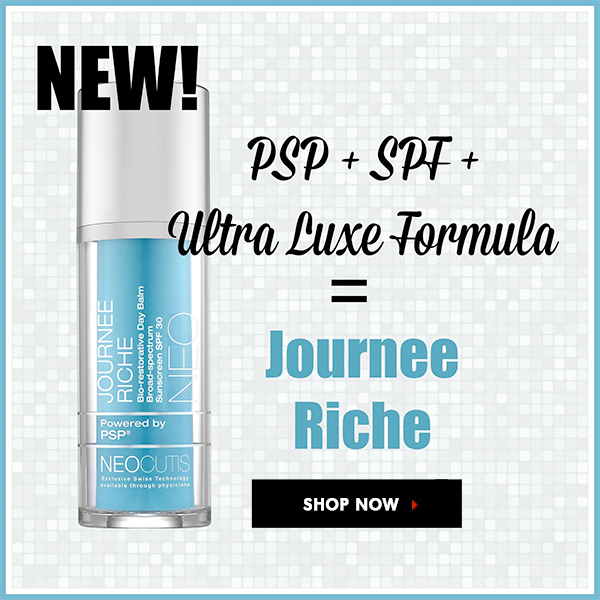 When it comes to layering your skincare products, there’s a right way and a wrong way. In fact, the order in which you apply your products is just as important as what’s inside them. You know the first step to use a cleanser, then a toner…but what comes next? Don’t fret. Learn to layer products like a pro, with our guide to skin care layering below.
When it comes to layering your skincare products, there’s a right way and a wrong way. In fact, the order in which you apply your products is just as important as what’s inside them. You know the first step to use a cleanser, then a toner…but what comes next? Don’t fret. Learn to layer products like a pro, with our guide to skin care layering below.
Morning regimen order
1. As a general rule, apply your lightest product first. Serums, which can range in texture from liquid to gels are applied first because they deliver the highest concentrated of active ingredients most efficiently. Pick two or three serums that each treat one of your concerns. For wrinkles, we recommend formulations with added peptides, like PCA Skin ExLinea Peptide Smoothing Serum. For oily skin types, look for serums that contain salicylic acid, like Cosmedix Clarity Skin-Clarifying Serum.
2. Use targeted treatments for problem areas next, like Murad Rapid Relied Acne Spot Treatment on that persistent blemish, or cover your crow’s feet with your favorite eye cream. We recommend one with an SPF like SkinCeuticals Physical Eye UV Defense SPF 50.
3. Then, apply full-face treatments, like an antioxidant treatment or acne treatment for the entire face.
4. Moisturize to seal in your other products. Facial oils, like Eminence Facial Recovery Oil can be applied after to any dry spots you find after moisturizing. If you’re using two or more serums under your moisturizer, skip any facial oils to avoid becoming too greasy. Remember, facial oils can penetrate moisturizers but not vice versa, so always apply your moisturizer before a facial oil. If you choose a moisturizer with an SPF, opt for one with UVA/UVB broad spectrum protection with a minimum SPF of 30. We recommend a lightweight, oil-free moisturizing SPF, like Elta MD UV Clear Broad-Spectrum SPF 46.
5. SPF. You’ve heard it a million times, but we’ll say it a million-and-one. Never leave home without an SPF on your face. We’ll leave it at that.
Night regimen order
1. Retinols need to be applied directly to clean skin to be most effective. However, if you have sensitive skin, applying a serum or moisturizer before hand will help the retinol to penetrate with less irritation.
2. After your first layer has absorbed, apply any targeted treatments, like a rich eye cream (we recommend Neocutis Lumiere Firm Riche), or if you have any other spot specific treatments, like Murad Rapid Age Spot Correcting Serum for dark spots and discoloration, now is the time to apply.
3. Finish with a moisturizer. Apply a heavier night cream, like Obagi Hydrate Luxe, for drier skin types. If you have oily skin, opt for a lotion, instead of a cream as they are less hydrating. Many are specifically for problem or acne-prone skin. We like Jan Marini Bioglycolic Bioclear Face Lotion.
Morning or evening, remember to wait for a few minutes between for each layer to allow for the product to absorb. This way each product is able to penetrate and deliver its specific benefits without interfering with the function of the next product layer.


 A.M. serum:to brighten and protect
A.M. serum:to brighten and protect


 A.M. moisturizer: to enhance glow and protectJane Iredale Glow Time Full Coverage Mineral BB Cream
A.M. moisturizer: to enhance glow and protectJane Iredale Glow Time Full Coverage Mineral BB Cream
 P.M. serum:to tackle dark age spots
P.M. serum:to tackle dark age spots
 P.M. serum:to improve overall texture
P.M. serum:to improve overall texture
 P.M. cream:to nix dullness
P.M. cream:to nix dullness 
 Normal Mole
Normal Mole Dysplastic Nevus
Dysplastic Nevus Actinic Keratosis
Actinic Keratosis Basal Cell Carcinoma
Basal Cell Carcinoma Squamous Cell Carcinoma
Squamous Cell Carcinoma Melanoma
Melanoma
 The New Year is almost here and it’s time to reflect on the changes we want to make in 2013. Just like you, the SkinMedix team has a slew of bad beauty habits we want to break starting January 1. With 2013 finally here, it’s prime time for some beauty resolutions!
The New Year is almost here and it’s time to reflect on the changes we want to make in 2013. Just like you, the SkinMedix team has a slew of bad beauty habits we want to break starting January 1. With 2013 finally here, it’s prime time for some beauty resolutions!
 Unless you’ve been under a rock (hopefully in an effort to avoid the sun), you’ve likely heard the ruckus over the new
Unless you’ve been under a rock (hopefully in an effort to avoid the sun), you’ve likely heard the ruckus over the new 















